|
Challenge: The Quest for Earth's Twin
|
|
|
|
|
| HarbingerDawn | Date: Friday, 08.03.2013, 20:50 | Message # 106 |
 Cosmic Curator
Group: Administrators
 United States
United States
Messages: 8717
Status: Offline
| Quote (borek555) Salvo coords maybe?
You can search every world in SpaceEngine if you like, you will never find a world that looks like that 
All forum users, please read this!
My SE mods and addons
Phenom II X6 1090T 3.2 GHz, 16 GB DDR3 RAM, GTX 970 3584 MB VRAM
|
| |
| |
| NovaSilisko | Date: Friday, 08.03.2013, 22:15 | Message # 107 |
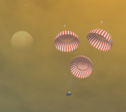 Explorer
Group: SE team
 United States
United States
Messages: 288
Status: Offline
| Well, you'll find one 
|
| |
| |
| migratingmynah | Date: Saturday, 09.03.2013, 05:20 | Message # 108 |
 Astronaut
Group: Users
 Singapore
Singapore
Messages: 44
Status: Offline
| Quote (Salvo) It's my lucky day! I found Earth's twin!! biggrin
How did you do that? 
Bye
|
| |
| |
| Salvo | Date: Saturday, 09.03.2013, 15:26 | Message # 109 |
 Star Engineer
Group: Local Moderators
 Italy
Italy
Messages: 1400
Status: Offline
| Quote (migratingmynah) How did you do that? blink
I just removed Diff Map 
Code Planet "Earth"
{
ParentBody "Earth-Moon"
Class "Terra"
Mass 1.0 // M_Earth
Radius 6378.14 // km
//Oblateness 0.0034
Age 4.54 // billions years
RotationPeriod 23.9344694 // hours
RotationOffset 100.5 // degrees
Precession 25592 // years
Obliquity 23.4392911 // degrees
EqAscendNode 180.0
Color ( 0.850 0.850 1.000 )
Albedo 0.367
Surface
{
//DiffMap "Earth/Surface"
DiffTileSize 514
DiffTileBorder 1
DiffMapAlpha "Water"
BumpMap "Earth/Bump"
BumpTileSize 514
BumpTileBorder 1
BumpHeight 9.486 // 0.907 + 8.579 km - total height
BumpOffset 0.907 // 0.907 km - below sea level
//BumpMap "Earth/Bump-gebco"
//BumpTileSize 514
//BumpTileBorder 1
//BumpHeight 19.007 // 10.577 + 8.430 km - total height
//BumpOffset 10.577 // 10.577 km - below sea level
Exposure 2.0
Life true
colorSea (0.00, 0.03, 0.06, 0.20)
colorShelf (0.02, 0.06, 0.13, 1.00)
colorBeach (0.57, 0.44, 0.40, 0.00)
colorDesert (0.38, 0.24, 0.14, 0.00)
colorLowland (0.44, 0.34, 0.31, 0.00)
colorUpland (0.57, 0.54, 0.42, 0.00)
colorRock (0.52, 0.42, 0.34, 0.00)
colorSnow (1.00, 1.00, 1.00, 0.50)
colorLowPlants (0.18, 0.24, 0.09, 0.00)
colorUpPlants (0.15, 0.17, 0.07, 0.00)*/
}
Ocean
{
Height 0.907
}
Atmosphere
{
Height 60 // km
Greenhouse 35 // degrees K
Pressure 1.0 // atm
Density 1.2929 // kg/m^3
Model "Earth"
Bright 10.0
Opacity 1.0
SkyLight 3.0
EclipseBright 250.0
EclipseColor ( 1.000 0.600 0.200 )
}
Orbit
{
Period 0.07480422854 // years
SemiMajorAxis 0.000031610219244232 // a.u.
Eccentricity 0.0549
Inclination 5.15 // deg
MeanAnomaly 135.27 // deg
AscendingNode 125.08 // deg
ArgOfPericen 138.15 // deg
//AscNodePreces 18.6 // years
//ArgOfPeriPreces 5.997 // years
RefPlane "Ecliptic"
}
}
The universe is not required to be in perfect harmony with human ambition.
CPU: Intel Core i7 4770 GPU: ASUS Radeon R9 270 RAM: 8 GBs
(still don't know why everyone is doing this...)
|
| |
| |
| migratingmynah | Date: Saturday, 09.03.2013, 16:24 | Message # 110 |
 Astronaut
Group: Users
 Singapore
Singapore
Messages: 44
Status: Offline
| Looks so much fitting with the other terras in SE 
Bye
|
| |
| |
| neutronium76 | Date: Tuesday, 02.04.2013, 15:40 | Message # 111 |
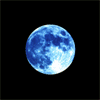 World Builder
Group: Users
 Greece
Greece
Messages: 718
Status: Offline
| I just want to say that I am planning to revive this old challenge once the new version (0.97) comes out. However this poll-type thread was a failure and the expiry date is lol  . So I am kindly asking for the asistance of the mods to delete this thread or render it dormant and move it to the archive section. In the meantime, Harbinger's challenges would keep us all happy and with something to do until 0.97 comes out . So I am kindly asking for the asistance of the mods to delete this thread or render it dormant and move it to the archive section. In the meantime, Harbinger's challenges would keep us all happy and with something to do until 0.97 comes out  . .
The new challenge will be much more intresting because the new version will include an exciting new feature: the ESI (Earth Similarity Index) and it will be much easier to quantify and measure the results  . .
What do you guys think?
PC1:Core i7 970@3.34GHz, 6 cores/12 threads, 12GB DDR3 RAM@1.34GHz, 2x(SLI) GTX-580 GPUs 3GB VRAM(GDDR5)@1GHz, OS:Win7x64SP1
PC2:Core2Quad X9770@3.2GHz, 2 cores/4 threads 4GB DDR2 RAM@1GHz, GTX-285 GPU 1GB VRAM(DDR3)@1.24GHz, OS:WinVistax64SP2
|
| |
| |
| Voekoevaka | Date: Tuesday, 02.04.2013, 16:19 | Message # 112 |
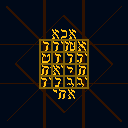 World Builder
Group: SE team
 France
France
Messages: 1016
Status: Offline
| Quote (neutronium76) The new challenge will be much more intresting because the new version will include an exciting new feature: the ESI (Earth Similarity Index) and it will be much easier to quantify and measure the results cool .
Great idea. I was about to say exactly the same thing.
P.S. : Since the creation of this thread, I havn't understand the goal of the poll at the beginning.
Want some music of mine ? Please go here !

|
| |
| |
| neutronium76 | Date: Tuesday, 02.04.2013, 18:06 | Message # 113 |
 World Builder
Group: Users
 Greece
Greece
Messages: 718
Status: Offline
| Quote (Voekoevaka) P.S. : Since the creation of this thread, I havn't understand the goal of the poll at the beginning.
Me too 
PC1:Core i7 970@3.34GHz, 6 cores/12 threads, 12GB DDR3 RAM@1.34GHz, 2x(SLI) GTX-580 GPUs 3GB VRAM(GDDR5)@1GHz, OS:Win7x64SP1
PC2:Core2Quad X9770@3.2GHz, 2 cores/4 threads 4GB DDR2 RAM@1GHz, GTX-285 GPU 1GB VRAM(DDR3)@1.24GHz, OS:WinVistax64SP2
|
| |
| |
| Disasterpiece | Date: Tuesday, 02.04.2013, 22:27 | Message # 114 |
 World Builder
Group: Users
 United States
United States
Messages: 640
Status: Offline
| But you made it. I am with a blown mind.
I play teh spase engien
|
| |
| |
| Tim | Date: Tuesday, 02.04.2013, 22:41 | Message # 115 |
 Explorer
Group: Users
 Belgium
Belgium
Messages: 296
Status: Offline
| It basicallys says:
What is the correct answer to this question?
a. the correct answer
b. the wrong answer
|
| |
| |
| Gondor2222 | Date: Wednesday, 24.07.2013, 03:20 | Message # 116 |
|
Space Pilot
Group: Users
 United States
United States
Messages: 92
Status: Offline
| This is actually a moon, but it has the highest ESI i've found so far as well as the most striking superficial resemblance to Earth 1 billion years ago. However, it has no life, and has significantly less water than the Earth. Its ESI fluctuates between about 0.94 and 0.98.
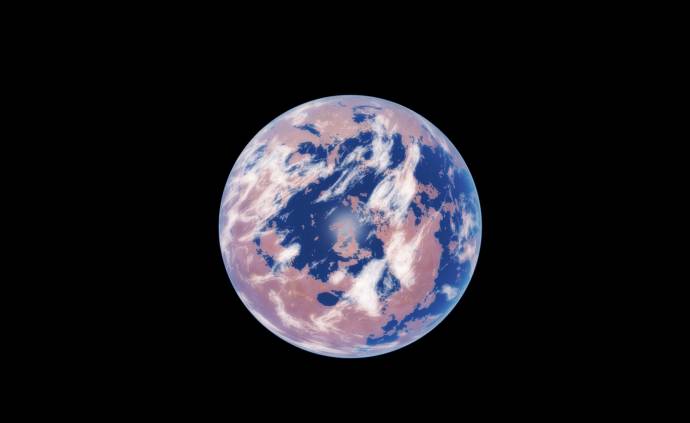
Shown here is the moon's hemisphere facing the planet. Oddly enough, although the moon is tidally locked, it is this hemisphere that displays the most variation in elevation. Perhaps the moon's large core powers tectonic activity that does away with craters and creates these venus-like structures, as well as preserving the planet's atmosphere.
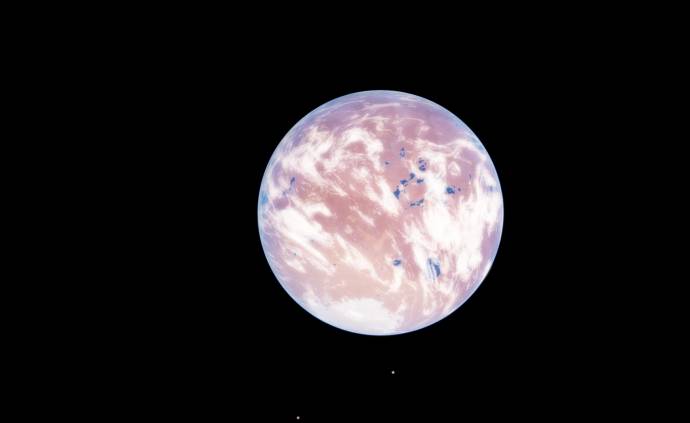
This is the moon's hemisphere facing away from the planet. This hemisphere's bodies of liquid resemble those on Titan, though these are almost certainly water instead of hydrocarbons.
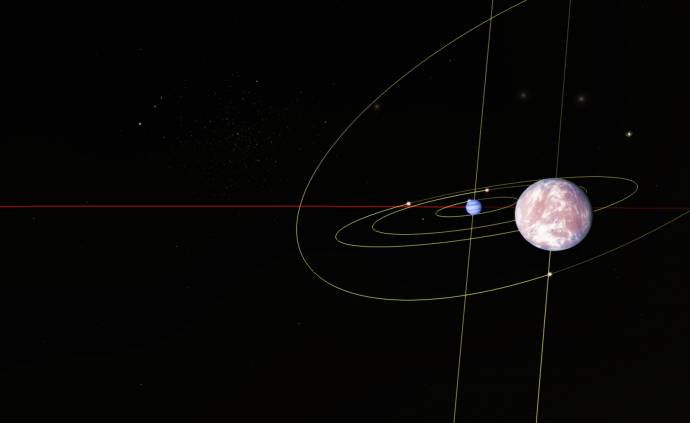
It is the outermost moon of a class II gas giant of roughly 1.4 Jupiter masses, and orbits on an extremely inclined plane (~100 degrees). This means that its daylit side rotates around the planet on a plane nearly perpendicular to its rotational plane, and its days on certain constantly moving points are created almost entirely by the orbit of the planet. This allows the moon's axial tilt relative to the parent star to rotate between about -80 and 80 degrees, creating erratic daylight cycles that are nearly identical but phase shifted from any location on the moon. Because the moon's orbital period and the planet's orbital period differ by a factor of almost exactly 6 (~54-~324 earth days, closer to 6.012), these day lengths depend on the moon's orbit number (6 in each of the planet's orbits) as well as a longer 12 earth year cycle. This makes day lengths extremely difficult to casually predict for any point on the planet.
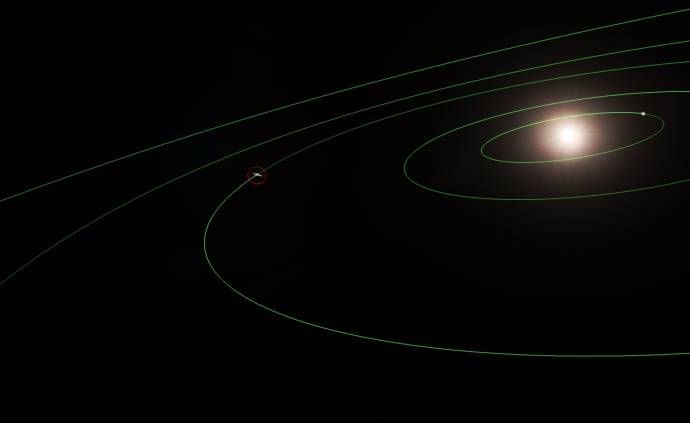
The moon's semimajor axis of just over 3% that of the planet, and the planet has an orbital eccentricity of about 0.05, so temperature fluctuations due to the moon's changing distance from the parent star are neither negligible nor regular. At certain times, the moon orbits in a plane normal to the line joining the planet and the star, so orbital fluctuations are negligible. At others the moon's orbit is coplanar to the line joining the planet and the star, so orbital fluctuations reach several degrees kelvin. Overall, the moon's distance to the star varies between about 0.8351 AU and 1.006 AU, with average global temperatures between 274 K and 300 K. This means the moon's ESI fluctuates between about 0.94 and 0.98.
The moon system of this giant is more compact further in, so all of the other moons appear as very bright starlike points from this outermost moon. The gas giant almost never transits the sun as seen from the moon, and the moon almost never casts a shadow on the gas giant, due to the moon's extremely high inclination.
The Moon is RS 8404-3584-7-8-400 3.7
Edited by Gondor2222 - Wednesday, 24.07.2013, 03:24 |
| |
| |
|
| neutronium76 | Date: Monday, 29.07.2013, 09:25 | Message # 118 |
 World Builder
Group: Users
 Greece
Greece
Messages: 718
Status: Offline
| Gondor2222, LostInSpace this thread is outdated. Please wait for the new challenge. It will start when SE 0.9.7.1 comes out
SE 0.9.7.0 doesn't have planets with life on single star systems.
To the mods: Please move this thread to archive. Thank you.
PC1:Core i7 970@3.34GHz, 6 cores/12 threads, 12GB DDR3 RAM@1.34GHz, 2x(SLI) GTX-580 GPUs 3GB VRAM(GDDR5)@1GHz, OS:Win7x64SP1
PC2:Core2Quad X9770@3.2GHz, 2 cores/4 threads 4GB DDR2 RAM@1GHz, GTX-285 GPU 1GB VRAM(DDR3)@1.24GHz, OS:WinVistax64SP2
|
| |
| |
| Salvo | Date: Monday, 29.07.2013, 09:58 | Message # 119 |
 Star Engineer
Group: Local Moderators
 Italy
Italy
Messages: 1400
Status: Offline
| Quote (neutronium76) Please move this thread to archive. Thank you.
We could keep it until 0.9.7.1, someone could find a nice terra with life under a nice multiple system 
The universe is not required to be in perfect harmony with human ambition.
CPU: Intel Core i7 4770 GPU: ASUS Radeon R9 270 RAM: 8 GBs
(still don't know why everyone is doing this...)
|
| |
| |
| Crashman1390 | Date: Tuesday, 30.07.2013, 19:30 | Message # 120 |
 Explorer
Group: Users
 Canada
Canada
Messages: 229
Status: Offline
| Salvo, could you be able to do procedural generation to other planets?
EDIT: There is a bit of a problem with the height for procedural earths land.
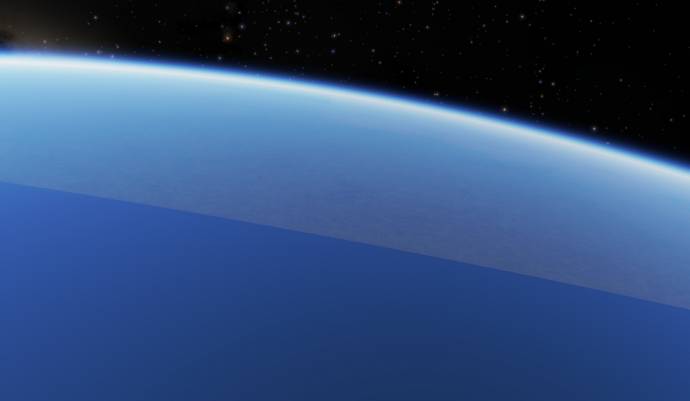
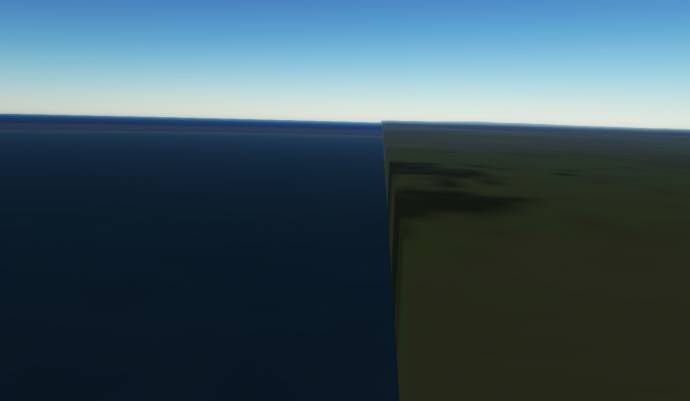
[b]I was wrong, this forum still has a horrible community.[/b]
Edited by Crashman1390 - Wednesday, 31.07.2013, 04:02 |
| |
| |